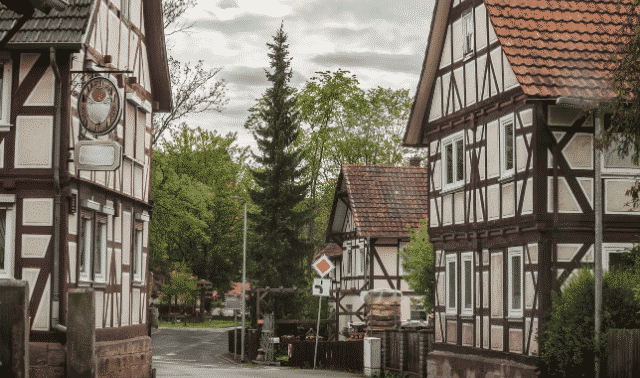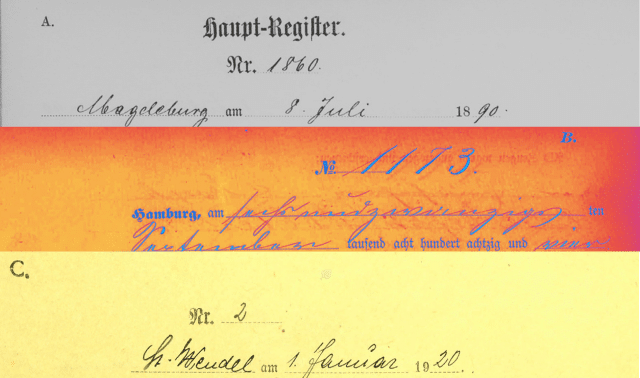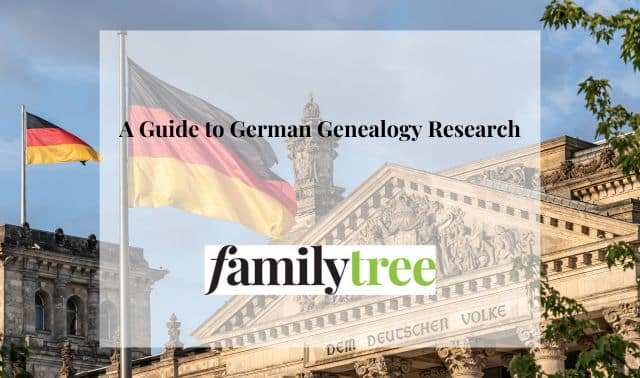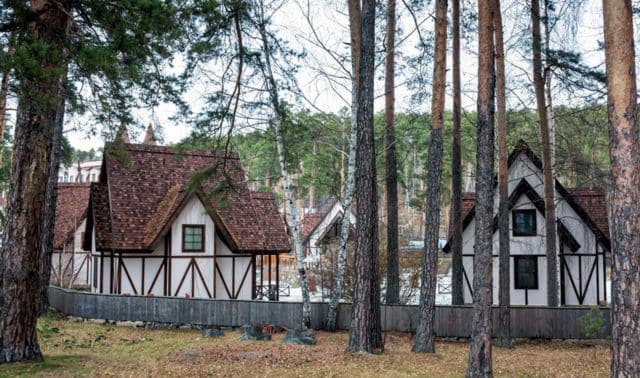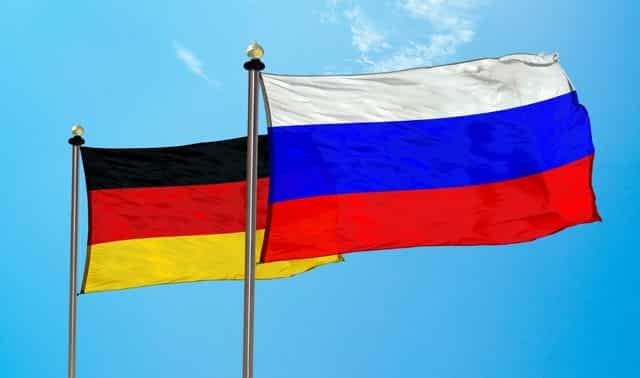
Are you among the 50 million Americans with German ancestry? Have you traced your line back to an immigrant? Take the next step and continue your research across the pond in your ancestor’s homeland. Your first target: German church records.
As in most European research, they’re your most important source for tracing German ancestors—they could help you extend your tree as far back as the 1500s. Sure, you’ll face scattered records, a foreign language and hard-to-read handwriting. But with online resources, accessing German church records is easier now than ever. And with our guide, you can find your ancestors’ records in just a few steps—or with a little luck, even fewer.
1. Learn What German Church Records are Available
Start by getting a feel for what you can expect to find in the records. Germany itself didn’t implement civil (government) registration of births, marriages and deaths until 1876. Before then, church records are the primary source of family information.
A local church, whose parish boundaries varied in size and may have included neighboring villages, kept these parish registers or church books, called Kirchenbücher in German. A rural parish might include several small, neighboring villages, while a large city might have many parishes.
Types of records
Church records include information on births, baptisms, marriages, deaths and burials:
- Baptisms (Taufen): A child was usually baptized a few days after birth. The registers typically provide the names of the infant and parents, as well as witnesses or godparents (who could be relatives). The records also note if the birth was illegitimate. They may include the child’s date of birth, the father’s occupation and the family’s place of residence. A cross indicates that the child is deceased, but not necessarily that the person died young (just that the parish recorded the death).
- Marriages (Heiraten): Marriage registers give the date of marriage and the names of the bride and groom. They may also indicate their ages, places of residence, and occupation, plus the names of the parents and witnesses and whether the bride or groom was single or widowed at the time. Men typically married for the first time in their mid-20s and women between ages 18 and 25. The wedding often took place in the bride’s home parish.
- Burials (Begräbnisse): Burial registers may include the deceased’s name, age, place of residence and the date and place of death or burial. They may also indicate date and place of birth, the parents’ names, the cause of death, and the names of survivors.
Sometimes they also contain registers of confirmations (Konfirmationen), communions, members and families (Familienbücher), and other records.
The latter contain information compiled from church books or obtained from families. More common in southern Germany, family registers include the parents’ names and dates and places of birth and marriage, along with the children’s names and dates of birth, marriage and sometimes death. Family registers may also note if someone moved to another village or emigrated.
Coverage
Church records from different time periods and areas of Germany vary in the details they provide. More-recent records tend to give more-complete information. In general, churches in western Germany began keeping records first. The farther east you go, the later the records start.
The earliest surviving Protestant records date from 1524 at St. Sebald in Nuremberg. Lutheran (Lutherische) churches began requiring records around 1540, Catholic (Katholische) churches in 1563, and Reformed (Reformierte) parishes by 1650. The Lutheran and Reform churches more or less consolidated in 1817 to form the Evangelical Church (Evangelische).
Amazingly, despite rebellions, invasions and devastating World Wars, most German church records survive intact. The most useful church records for genealogy are baptism, marriage and burial registers.
Language
You’ll probably have to read websites and communicate with churches and archives in German. Catholic records were usually written in Latin and Protestant records in German. (German-speaking parishes in France may have kept records in French.)
German records are written in notoriously hard-to-read Gothic script. But don’t worry: You can do decipher them or contact churches and archives even if you don’t know a word of the language. Refer to the German Word List on the FamilySearch Wiki and use online translators, such as Google Translate.
2. Identify Your Immigrant Ancestor’s Parish
You need to know your ancestor’s German hometown to find church records there. Records of American churches that served German families often name members’ hometowns in Germany. The Lutheran church record for the death of my ancestor Tobias Schaubhut in Lancaster County, Pa., says, “1803, Tobias Schaubhut, von Eichen in Durlachschen, sturb d 19 October, begraben d 21 Oct, Alt 41 Jahr 4 Mo 1 Tag. Krankheit: mit zehrendem, hitzigem Fieber.” This translates as “1803, Tobias Schaubhut, from Eichen in Durlach, died 19 October, buried the 21 October, age 41 years 4 months 1 day. Sickness: with debilitating, hot fever.”
Other sources to examine for a place of origin include family papers, death records, obituaries, naturalization records, passports and county histories. Check FamilySearch, Ancestry.com and MyHeritage for your immigrant ancestor and potential relatives with the same last name. Ancestry.com’s “Hamburg Passenger Lists, 1850–1934” are indexed for the years 1850 to 1914 and give the last place of residence in Europe. Also try to determine your ancestor’s religious affiliation, usually Lutheran (often called Evangelical in Germany) or Catholic.
Distant relatives may still live in the place in Germany where your ancestor was born. If you’re researching an uncommon surname, search the national phone book, Das Telefonbuch. Enter the name in the Wer/Was (Who/What) box and click on Finden. Also search Facebook for people in Germany with the last name.
Once you’ve discovered the place in Germany, find the location and the name of the church parish using gazetteers and databases like Meyers Gazetteer and Kartenmeister. It’s common to find towns of the same name in different areas of Germany, so this is important. Try to identify the parish, village, district and state.
A large city might’ve had many parishes, while a small village without its own church was usually part of a parish in a nearby larger town. In Tobias’ death record, “Eichen in Durlachschen” refers to the village of Eichen, located in the Protestant region of Baden, which was known as Baden-Durlach until 1771. Eichen is near the larger town of Schopfheim in the southwestern corner of Germany, close to the French and Swiss borders.
Meyers Gazetteer is perhaps the gold standard in finding German place names. My immigrant ancestor Leonard Slip was born in the village of Frankfurt in the province of Middle Franconia (Mittelfranken). Meyers Gazetteer shows that this Frankfurt is in the Evangelical parish of Obersteinbach and the Catholic parish of Scheinfeld.
The German Society for Computer Genealogy (der Verein für Computergenealogie) has several useful tools, mostly in German, on its website. The genealogical gazetteer of place names contains 858,000 entries. To search it, click on GOV, enter a place name in the box and click the Search button.
A search on Frankfurt produces 167 matches, including an entry for the village in Mittelfranken. The gazetteer gives the district, administrative region, state and country where the village is located.
If you prefer books to websites, consult Map Guide to German Parish Registers (Family Roots Publishing), a series of volumes by Kevan M. Hansen that list the parishes associated with each town, as well as neighboring parishes.
3. Search for Online Church Records.
Here’s a rundown on the websites with the largest collections of German church records—and examples showing how I have used them
Ancestry.com $

In addition to millions of German church records licensed from FamilySearch, Ancestry.com has several unique collections. They include transcriptions linked to record images from Bremen, the Rhineland, and Württemberg dating from the 16th century to the mid- to late 20th century. Ancestry.com also has many church record transcriptions from Baden, Brandenburg, Mecklenburg, and Saxony.
To browse German record collections on Ancestry.com, click on Search > All Collections. Then scroll down and select Europe > Germany. Church records are listed in the Birth, Marriage & Death category. Find collections for a particular region, such as Bavaria or Hesse, by selecting it on the right.
Alternatively, you might start on Ancestry.com’s home page with a broad search to catch records on both sides of the Atlantic. A search for my ancestor Johann Caspar Reisner, born in about 1710 in Germany, turns up matches in multiple collections from Germany and Pennsylvania.
FamilySearch
FamilySearch has church records from across Germany, some unavailable elsewhere online. They include transcriptions, some of which are linked to record images, and unindexed record images that you can browse.
The Germany research page is a good jumping-off point. To access it, click on Search and select Records. Then enter Germany under Search by Place. A camera icon in search results indicates the collection is linked to record images; a camera with a key indicates that access to the images is restricted, and you might have to go to an affiliate library or FamilySearch Center to view them.
My ancestor Tobias Schaubhut immigrated from Germany in 1786. A Lutheran church register, written in German in Lancaster County, Pennsylvania, says that he came from Eichen. It gave his date of death and a specific age—41 years, 4 months and 1 day—from which I could calculate an exact date of birth.
Alternatively, you can search the FamilySearch Catalog (Search > Catalog) by place to find all collections—including those currently unindexed. Type in a place name, and FamilySearch will suggest matching places. Click Search, then filter by subject or record type.
Search the Catalog for Eichen, and the matches include Germany, Baden, Eichen. That place has just two collections: “Kirchenbuch, 1605–1962” under Church Records and an Ortssippenbüch under Genealogy. The former is housed at the FamilySearch Library in Salt Lake City, but you can browse it online.
Click for details. One entry in the listing of “Kirchenbuch, 1605–1962” is a Familienbuch for Eichen—click the camera to page through its 1,148 digital images. That seems daunting, but the document has an index of names near its end. There, I find that the Schaubhut family is mentioned on page 55 of the original document, which translates to image 1105. Tobias is listed in the household entry for his father, Johann Jakob Schaubhut.
Matricula
Matricula provides free online access to Catholic church books from Germany, Austria and Luxembourg, plus some records from Poland, Serbia and Slovenia. The site has a few Lutheran church records, too.
I couldn’t find a Lutheran baptism record for Leonard Slip in his hometown of Frankfurt, so I decided to try checking Catholic records instead. According to the Meyers Gazetteer website, Scheinfeld is the nearest Catholic parish to the village of Frankfurt.
On Matricula, I clicked Search for Places and got a match on Scheinfeld: Mariä Himmelfahrt. The parish profile says it’s in the Roman Catholic archdiocese (Erzbistum) of Bamberg. It also lists towns in the parish and has links to modern and historical maps.
Scroll down for links to 80 church registers from 1616 to 1924. For each register, Matricula indicates the record type, such as baptisms, marriages or deaths (Taufen, Eheschließungen or Sterbefälle) and the years covered. The first column has links to page images and register details.
Click the camera icon to see images. The Scheinfeld Taufen index for 1706 to 1769 links to a handwritten index of names. Several pages in, I found a 1748 reference to “Schlepp Leonhard Johann.” Browsing the baptismal registers on Matricula for 1748, I then found the entry for Johann Leonard, a son of Georg Schlepp of Frankfurt and his wife Magdalena who was baptized on 21 August 1748.
These handwritten indexes also led me to a marriage record for his parents, plus a baptism record for his brother. Back in 2012, I paid a professional researcher $138.32 to find these three records for me in a German archive. Now, I can access them online for free.
Archion $
With support from Protestant churches and archives, Archion provides online access to more than 150,000 church books. The site adds new material often.
You need to buy a pass to view records. A one-month pass costs about $22 and gives you up to 50 downloads. To switch languages, click on DE at the upper right and select English.
Records on Archion are not indexed by name, so you need to know where your ancestors lived. There are two ways to find records for a particular place:
- Click Search and enter a place name in the Location box. If there’s more than one place with that name, select from the options that pop up. For example, search on Obersteinbach, and you can choose the one in Bavaria (Bayern) or the Palatinate (Pfalz). Optionally, limit the search to a range of years and record type.
- Click Browse and select the archive for a region, such as Bayern/Bavaria. (There’s also an option, Mennoniten, for Mennonites regardless of geography.) From there, you can drill down to a smaller region such as a deanery (Dekanat) or religion (such as Reformed/Reformierte Kirche or Jewish/Juden). You’ll continue refining by parish, then record type or year. Church books shown in green are available online.
Archion has church registers for Markt Taschendorf and Obersteinbach, so I checked them for the Schlöpp/Schlepp family. While I didn’t find anything on Leonard’s parents, I did come across references to a couple that could be his grandparents. The registers of Obersteinbach note that Georg Schlep of Frankfurt and his wife donated “a beautiful clock for our new pulpit” on Good Friday, 3 April 1733. Later, the widow Maria Schlepp of Frankfurt was thanked for her donation of two guilders to the church.
4. Write to German Churches
If the records you need aren’t online, contact the parish directly. Most German parishes have websites with contact information. To find a parish’s website, Google the parish name plus evangelische kirche for a Lutheran church or katholische kirche for a Catholic church. For example, a search for obersteinbach evangelische kirche produces matches on the Lutheran church in Middle Franconia and on one in another town named Obersteinbach in Alsace-Lorraine.
If a web search doesn’t work, try the online parish directory of the Lutheran or Catholic church in Germany. You may need to determine which province or diocese your target parish is in before you search directories.
Try the email contact for the parish first. Keep in mind that the primary job of the contact person is religion, not research, so you might not get a response right away. Limit each request to a specific record, such as a baptism or marriage, or at least to a certain family. Write in German, following the guide at FamilySearch. You may have to pay a fee, even if no records are found. If you need extensive research done, you may want to hire a local researcher in Germany.
5. Contact German Archives
Some original parish registers have been forwarded to a central church archive, a state or municipal archive or another office. In other cases, archives have microfilm copies of local church records. When you request information about early records from a church, you might be referred to an archive where they’re held.
GenWiki has links to profiles of German archives. For church archives, click on the arrow beside Kirchenarchiv in Deutschland, and select Bistumsarchiv in Deutschland for Catholic diocese archives or Landeskirchenarchiv in Deutschland for Lutheran archives. The archives often can’t respond to genealogical requests, but staff may be able to tell you if they do.
Some German church archives have online inventories of their parish register holdings. In general, press Ctrl-F to use your browser to search the archives’ home page for links to Kirchenbücher (church books).
Once you have the church records in hand, you’ll need to read them (see below). Accessing German church records takes diligence, but it’s probably the only way you’ll trace your German ancestry. And you just might have fun in the process.
Versions of this article appeared in the October/November 2013 and September/October 2023 issues of Family Tree Magazine, and was last updated in August 2023.

